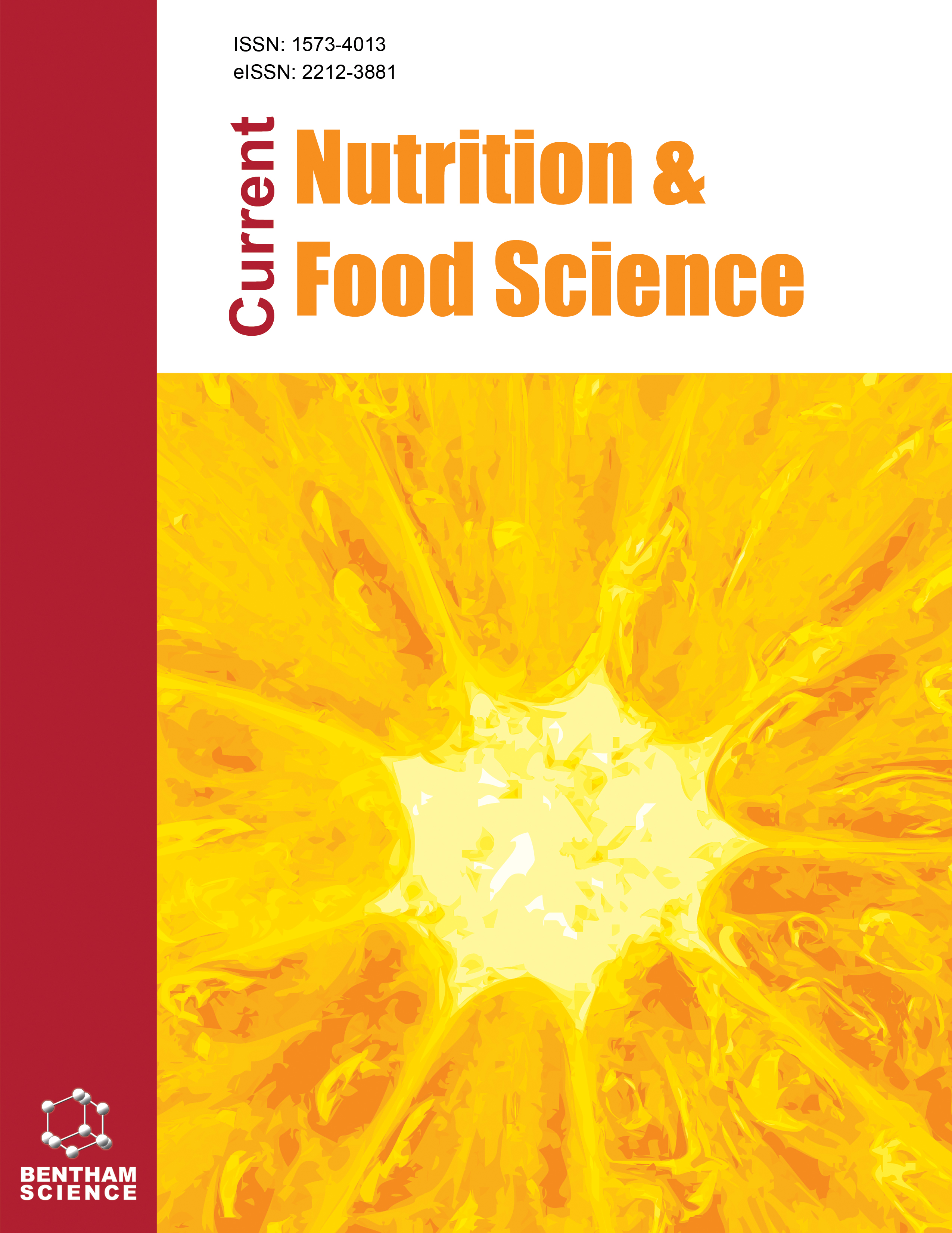- Home
- A-Z Publications
- Current Nutrition & Food Science
- Previous Issues
- Volume 6, Issue 2, 2010
Current Nutrition & Food Science - Volume 6, Issue 2, 2010
Volume 6, Issue 2, 2010
-
-
Stable Isotope Techniques to Develop and Monitor Nutrition Interventions
More LessAuthors: Andrew P. Hills and Lena DavidssonA combination of industrialization, urbanization, economic development and globalization has resulted in rapid changes in diets and lifestyles for many populations. The impact of these changes is significant for the health and nutritional status of such populations, particularly in the developing world. The negative consequences of the nutrition transition include poor nutrition and decreased physical activity, with a corresponding Read More
-
-
-
The Mediterranean Diet: A Combination of Beneficial Elements for Cardiovascular Disease
More LessOur diet plays an essential role in both the prevention and the natural history of cardiovascular disease. Recent population studies have shown that several foods (e.g., oily fish, fruit and vegetables, garlic, and fiber) have a clearly cardioprotective effect and should be consumed by patients at risk of vascular disease. In other foods, this effect is found alongside properties such as high energy content (eg, nuts or olive oil). Some Read More
-
-
-
Legumes: A Healthy and Ecological Source of Flavonoids
More LessAuthors: Encarna Velazquez, Luis R. Silva and Alvaro PeixThe Leguminosae are the third largest flowering plant family and includes more than 19,000 species, a small part of them considered edible for man and animals. Grain legumes such as soybean, chickpea, pea, lentil, common bean, faba bean or peanut are the main protein source together with cereals in many developing countries. They also form part of the Mediterranean diet and some of them are consumed after microb Read More
-
-
-
Toxicological Effects of Dietary Biogenic Amines
More LessAuthors: Victor Ladero, Marina Calles-Enriquez, Maria Fernandez and Miguel A. AlvarezBiogenic amines (BAs) are defined as low molecular weight organic bases with biological activity. They are formed and degraded as part of the normal metabolism of microorganisms, plants and animals, in which they have important physiological functions. In humans, BAs are involved in brain activity, the regulation of body temperature and stomach pH, gastric acid secretion, the immune response, and cell growth and dif Read More
-
Volumes & issues
-
Volume 21 (2025)
-
Volume 20 (2024)
-
Volume 19 (2023)
-
Volume 18 (2022)
-
Volume 17 (2021)
-
Volume 16 (2020)
-
Volume 15 (2019)
-
Volume 14 (2018)
-
Volume 13 (2017)
-
Volume 12 (2016)
-
Volume 11 (2015)
-
Volume 10 (2014)
-
Volume 9 (2013)
-
Volume 8 (2012)
-
Volume 7 (2011)
-
Volume 6 (2010)
-
Volume 5 (2009)
-
Volume 4 (2008)
-
Volume 3 (2007)
-
Volume 2 (2006)
-
Volume 1 (2005)
Most Read This Month
Article
content/journals/cnf
Journal
10
5
false
en


